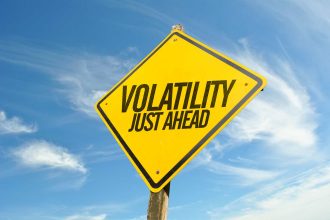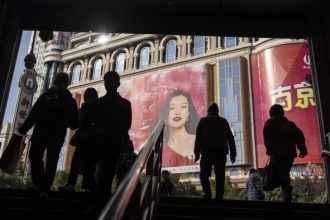In an era of technological and societal transformation, navigating the complexities of hybrid and remote work has become a critical concern for many organizations. The perspectives of four seasoned HR leaders, like individual musicians in a symphony orchestra, blend into a harmonious exploration of these challenges and the potential pathways forward. Let’s parse the score and delve into the insights shared by Maggie Driscoll, Chief People and Culture Officer, Blackbaud, Kevin S. Frank, CHRO of a mid-size marketing company, Victoria Collins-Hughes, Consultant, VCHughes Consulting and VP of HR at National Environmental Education Foundation, and Karen Cho, CHRO at Designer Brands.
The Opus of Opportunities: Benefits of Hybrid/Remote Work
Beginning on an upbeat tempo, our HR leaders shared the manifold benefits their organizations experienced after embracing hybrid or remote work.
Maggie Driscoll highlighted a surge in diversity and internal mobility at Blackbaud post their transition to a remote-first approach. Geographic barriers that once limited talent acquisition faded away, enabling them to cast a wider net and attract a diverse range of applicants from different regions.
Kevin S. Frank chimed in with the perspective of a mid-size marketing company. For him, the transition to hybrid work was a panacea to the monotonous grind of the corporate world. He underlined how the elimination of commute stressors rekindled a sense of work-life harmony that eluded many during pre-COVID times. The ability to control one’s work environment and schedule brought a renewed sense of agency and balance to employees’ lives.
Victoria Collins-Hughes added another melody to this part of our symphony. She emphasized the boost to employee health and well-being that comes with the flexibility of hybrid/remote work. Less stress from commuting, healthier eating habits, more time for exercise, and fewer workplace misunderstandings led to a noticeable rise in employee satisfaction and engagement in wellness activities.
Finally, Karen Cho of Designer Brands contributed a rich counterpoint to this harmonious conversation. She highlighted an often-overlooked aspect of remote work: it’s egalitarian nature. Remote work has transformed office dynamics, turning everyone into “an equal-sized box on the screen,” breaking the shackles of physical offices and promoting a culture of inclusivity and collaboration.
Navigating the Crescendos: Challenges of Hybrid/Remote Work
While the advantages of hybrid/remote work are clear, it’s not all smooth sailing. Our quartet painted a realistic picture, acknowledging the crescendos and complex rhythms present in this composition.
Maggie Driscoll at Blackbaud recognized the challenge of competing for talent in the more significant pool of remote/hybrid workforces and the importance of cultivating an engaged workforce in a decentralized setup.
Echoing Driscoll’s sentiments, Kevin Frank brought attention to the more subtle challenges of hybrid/remote work, like building trust and rapport in a team scattered across different locations, fostering a sense of community and belonging, and ensuring regular communication. These are the softer aspects that form the glue of high-performing teams, and in a hybrid/remote setting, they demand a more deliberate and creative approach.
Victoria Collins-Hughes resonated with similar sentiments around communication and adapting to new styles of managing remote teams. She also emphasized the importance of recognizing that not every employee is equipped or prefers to work remotely, highlighting the need for a flexible approach that accommodates different working styles.
Karen Cho shed light on the broader organizational challenges, such as nurturing corporate culture and navigating office politics in a remote setup. She also noted a critical challenge for leaders: the need to shift from a “butts in seats” mentality to evaluating performance based on clear expectations and results. Karen’s comments reinforce the points I make time and again to clients who I help transition to a return to office and hybrid work: the key is to focus on outcomes in performance management, rather than mere presence.
The Grandioso: Solutions and Strategies
The quartet unanimously agreed on the necessity of internal interventions, such as transparent communication, setting performance expectations, and providing continuous feedback. These internal processes form the backbone of a resilient remote or hybrid work environment.
However, they also recognized the value of supplemental external resources. For example, Driscoll mentioned using tools from their technology partners to empower employees, and Collins-Hughes suggested tapping into a solid professional network to gain external insights and perspectives.
Cho, meanwhile, described how Designer Brands was tackling these challenges head-on, with their Global HR Team developing a vision for an evolved, unified culture that embraced flexibility while staying true to their existing values.
Conducting the Orchestra: The Evolving Role of HR Leaders
Like skilled conductors guiding a symphony, our quartet of HR leaders was aligned in their belief that HR leaders should play a central role in orchestrating the transition to a hybrid or remote work setup. Their role must evolve, continuously learning, adjusting, and listening to employees to create a harmonious and effective workplace.
Cho emphasized that no single HR leader has all the answers and that learning from peers and maintaining an open dialogue with industry colleagues can help refine their strategies. This open exchange of ideas and experiences is crucial to navigating the uncharted waters of the hybrid/remote work landscape.
The Grand Finale: The Future Crescendo of Hybrid/Remote Work
Our symphony concludes on a high note: the future of hybrid and remote work is bright and is here to stay. Despite challenges and nuances, the overarching theme from our HR maestros is clear – flexibility, inclusivity, and continuous learning form the basis of this new work paradigm. As we continue to navigate the post-pandemic world, the harmonies of hybrid and remote work will only continue to enrich our workplaces.
Read the full article here





